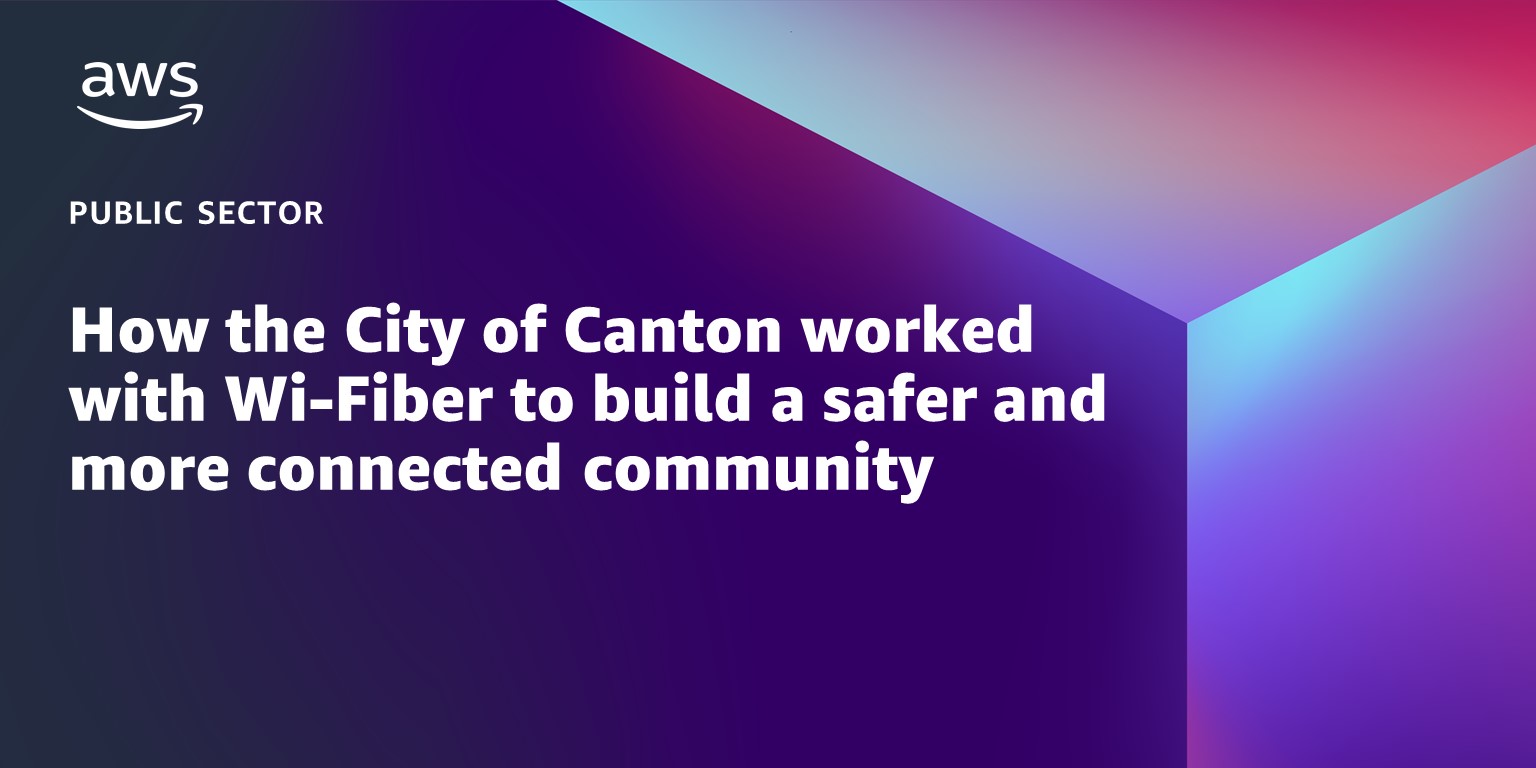AWS Public Sector Blog
Tag: justice and public safety
AWS launches first GovTech Accelerator to drive innovation in government
To help government technology (GovTech) startups build solutions that enable government agencies to better serve their communities, AWS is launching its first AWS GovTech Accelerator. This inaugural program is now accepting applications from startups interested in leveraging cloud-based resources to accelerate innovation. AWS wants to help startups develop solutions that address the needs of government agencies, with the first cohort focused on justice and public safety organizations including courts, corrections, emergency services, and law enforcement. Applications open today and close Monday, July 10, 2023.
How the City of Canton worked with Wi-Fiber to build a safer and more connected community
In 2020, the City of Canton, Ohio set out to build a better, safer, and more connected community. The city worked with government technology (GovTech) company Wi-Fiber, a network infrastructure provider using AWS Direct Connect. Wi-Fiber combined the City of Canton’s wireless hardware, existing copper, and fiber, where available, to connect hundreds of installed devices alongside roadways, intersections, and buildings. In two years, Canton successfully intertwined its legacy infrastructure with Wi-Fiber’s technology to maximize efficacy and minimize cost.
How the Norton Police Department saves time and money with AWS Public Sector Partner SOMA Global
In early 2020, the Norton Police Department’s (NPD) on-premises, legacy system, failed them for the last time. Lifesaving services were down. To revive them, NPD made the decision to go live on AWS Partner SOMA Global’s public safety platform—six months ahead of the scheduled cutover date. Despite the early deployment, the SOMA platform exceeded expectations, making sure critical emergency call-taking and dispatching continued. Using SOMA also helped NPD cut costs and save time. Read on to learn how the NPD found a successful partnership with SOMA Global in their time of need.
Supporting 911 centers with non-emergency response solutions: An architecture guidance
AWS is helping the 911 community mitigate the impact of staffing shortages on call wait times by providing 911 centers the means to automate the receipt and resolution of designated non-emergency calls. Learn how the Jefferson County Communications Center Authority is already seeing improvements using an AWS solution, and discover the solution’s components that support 911 centers in handling non-emergency calls at scale.
How Livingston Parish prepares for natural disasters by improving resiliency in the cloud
Natural disasters are devastating, often resulting in loss of life, massive property damage, and damage to the critical infrastructure that powers emergency services. This can prompt public sector organizations to consider building more resilient infrastructure. Such was the case for the 911 system in Livingston Parish, Louisiana, an agency that dispatches for 21 public safety agencies including law enforcement, fire, and emergency medical services, and averages over 325 calls for service per day. After a major flood in 2016 knocked out their 911 system, they worked with AWS Partner TailorBuilt Solutions, LLC. to use AWS to become resilient against disaster, reducing service interruptions and improving response times.
How Nomad uses Amazon IVS to scale public court livestreams
According to the United States Constitution, public access to judicial proceedings is a right covered by the First and Sixth Amendments. To make hearings visible to the public, even when in-person attendance is limited, state and local governments are beginning to mandate many court proceedings be live streamed, often with a very short window to do so. The cloud-native media and asset management platform Nomad, which is built on AWS, helps governments implement scalable live streaming capabilities quickly and simply.
How data-driven technology helps law enforcement agencies improve constituent outcomes
With the development of 5G and an ever-growing number of cloud-connected devices, data is becoming available at an unprecedented rate. Law enforcement agencies can use this hyper-connected environment to bridge previously isolated data siloes and make better-informed decisions to improve emergency response and citizen services. To discuss how law enforcement agencies are using new technology to improve constituent outcomes, AWS recently hosted a webinar featuring a panel of experts. Read on for key takeaways from the webinar and watch on-demand.
How Carbyne’s cloud-native platform helps 911 call centers put eyes on the scene and more
Carbyne, an AWS justice and public safety customer and partner, provides 911 call handling systems, offering a cloud-native software as a service (SaaS) platform. Although any public safety answering points (PSAPs) can benefit from Carbyne’s cloud-powered solution, certain regions with hostile, remote terrain can especially benefit from improved caller location and the ability to put eyes on the scene. This is crucial, for example, in situations where people are lost or hurt in the desert, and in desert-heavy counties that form the Rio Grande Council of Governments (RGCOG). Using Carbyne improved RioCOG’s caller location from an accuracy of a few miles to within roughly 10 meters on over 85% of emergency calls.
Customers in all 50 states in US can now host criminal justice information on AWS
After a multi-year journey working with the mission critical application technology providers and Criminal Justice Information Services (CJIS) officials across the US, Amazon Web Services (AWS) implemented a simple and technically robust approach to CJIS compliance. Now, agencies and organizations in all 50 states in the US can host criminal justice information (CJI) on AWS.
A journey of innovation in CJIS compliance
To protect citizens and save lives, justice and public safety agencies rely on timely access to critical information, such as criminal histories, arrest warrants, stolen vehicles, and 911 call data. Providing this mission critical criminal justice information with five nines (99.999%) availability and protecting it according to the rigorous security requirements prescribed in the Criminal Justice Information Services Security Policy are top priorities for criminal justice agencies (CJA). AWS’s innovative features and security controls can help customers achieve CJIS compliance in a simplified way.









